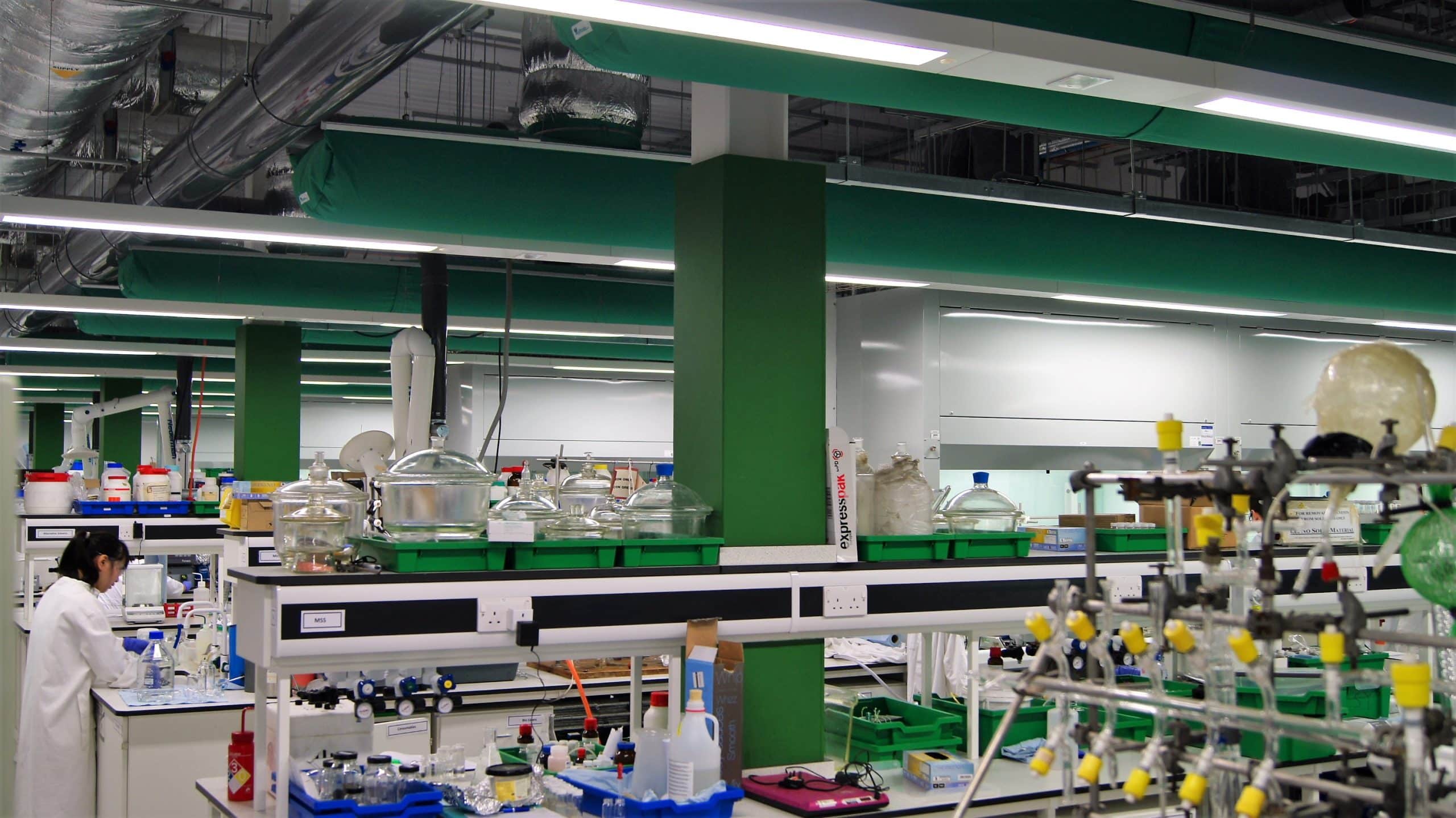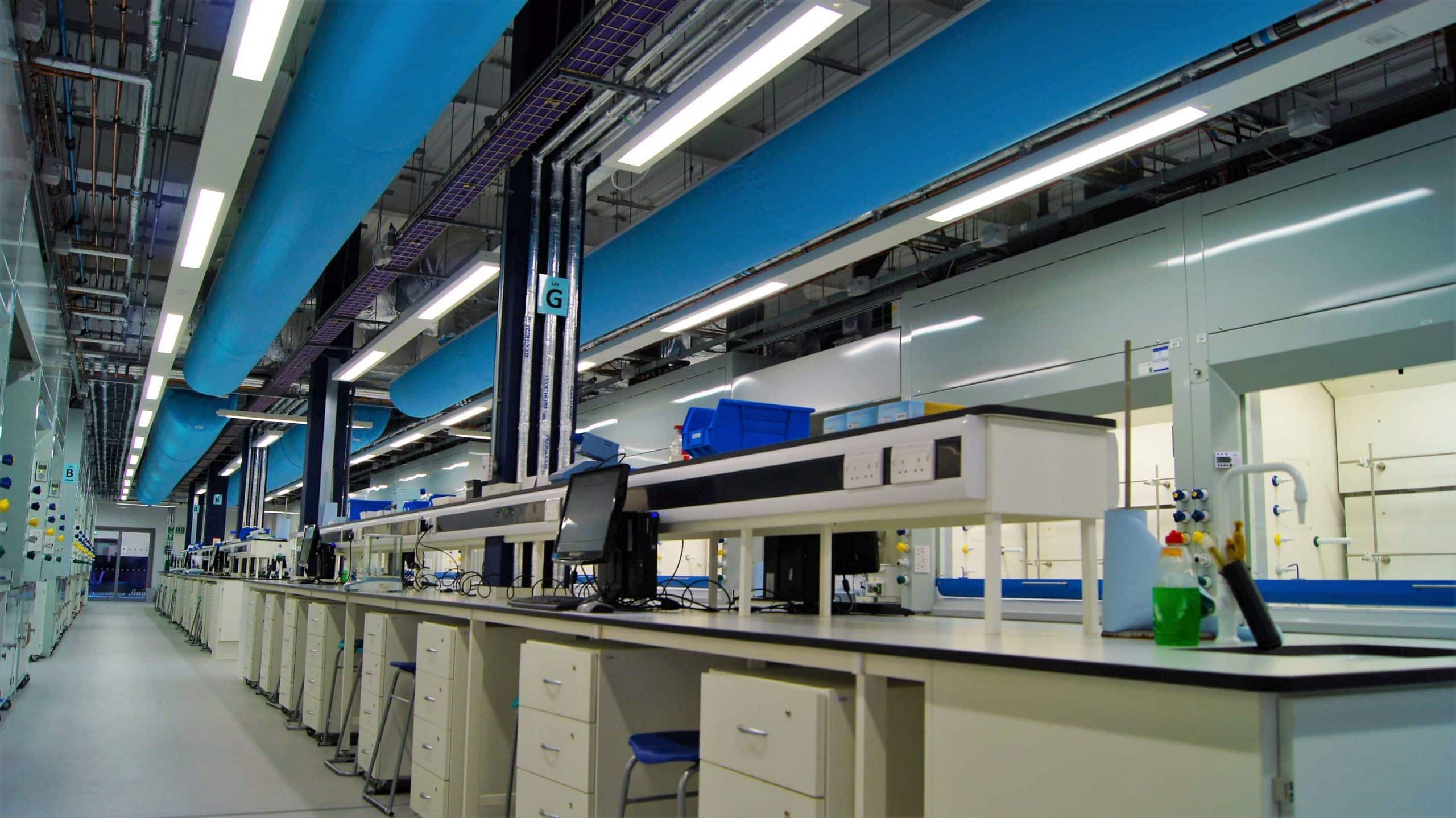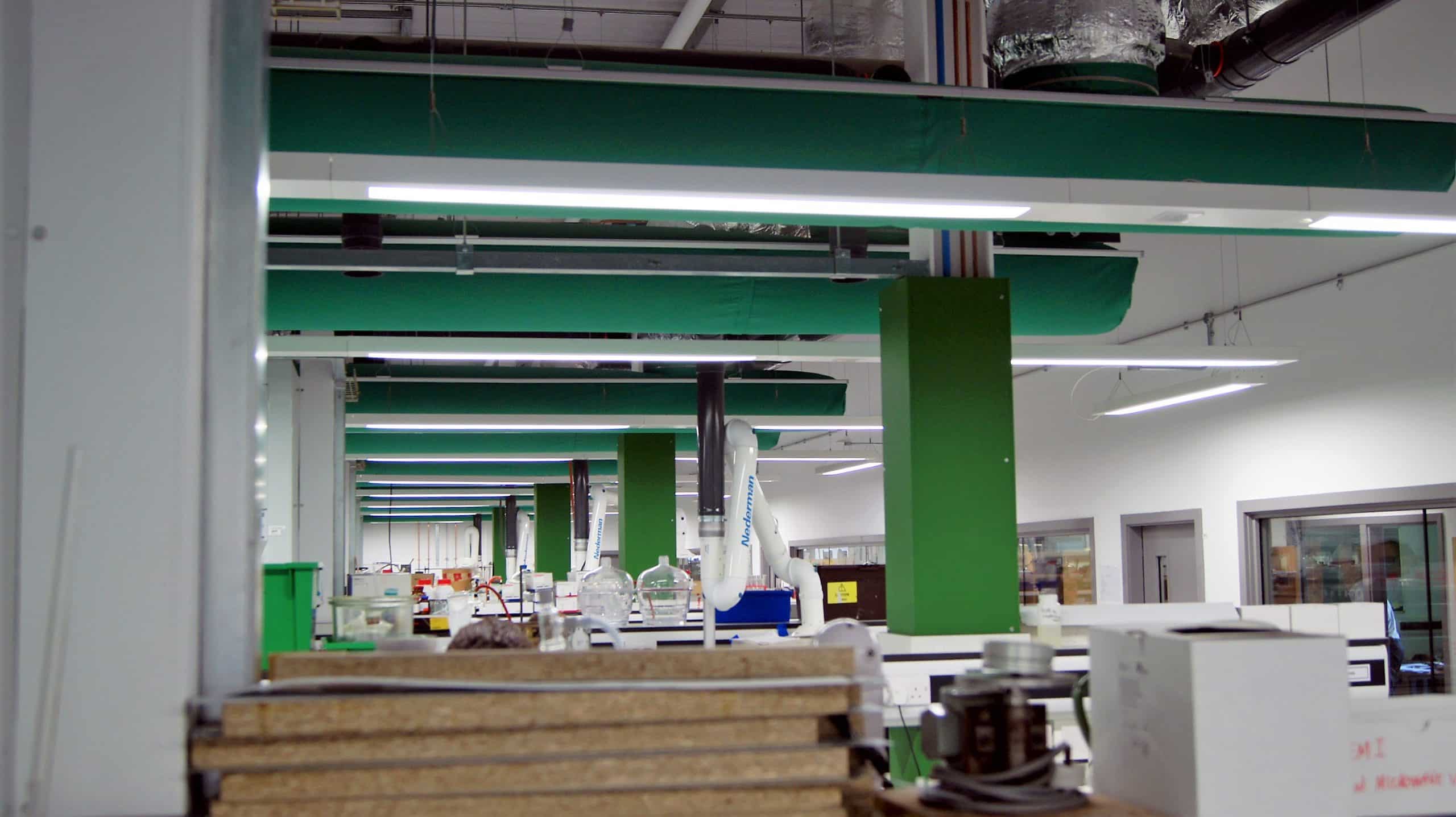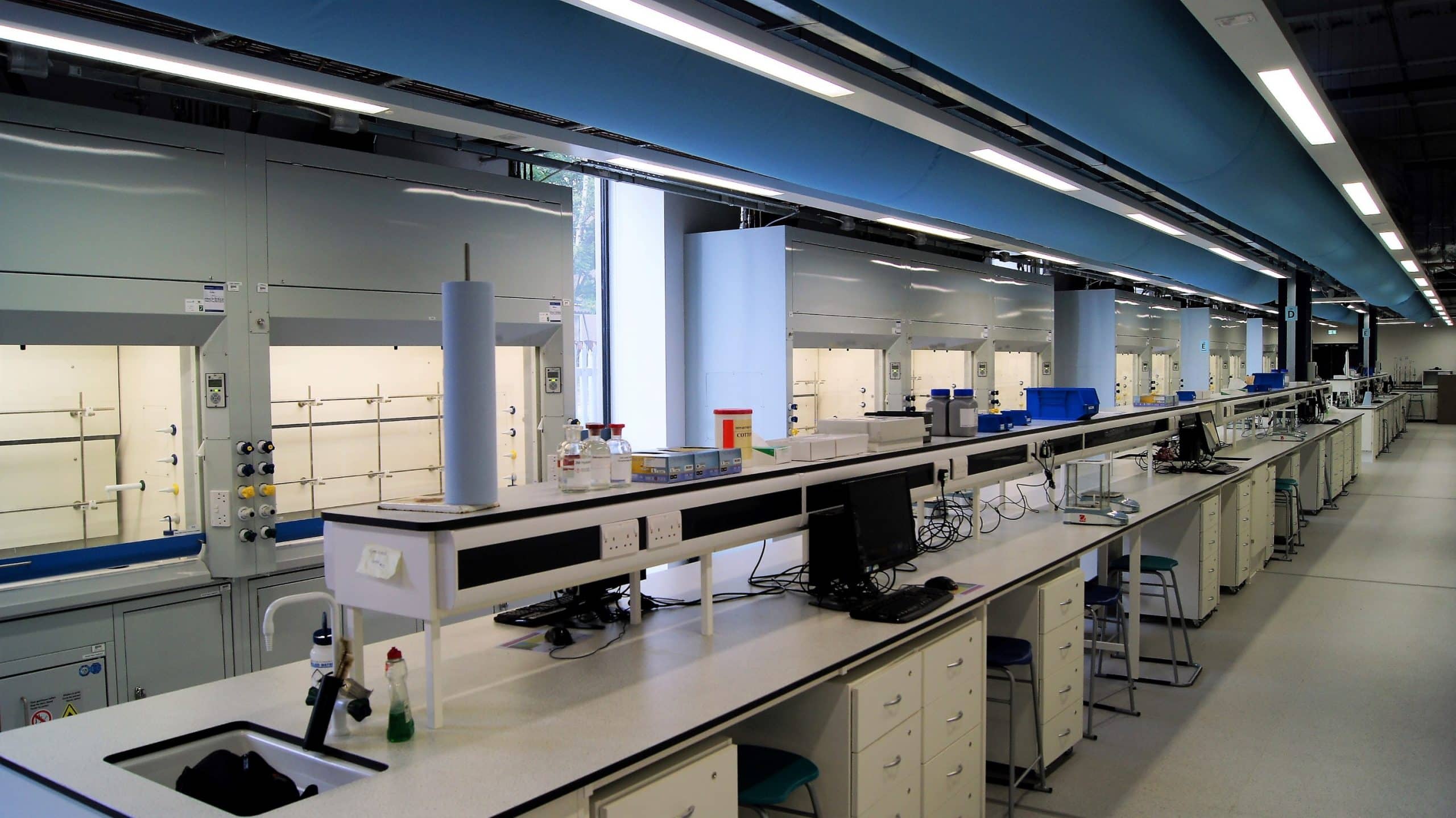University of York Laboratory Case Study

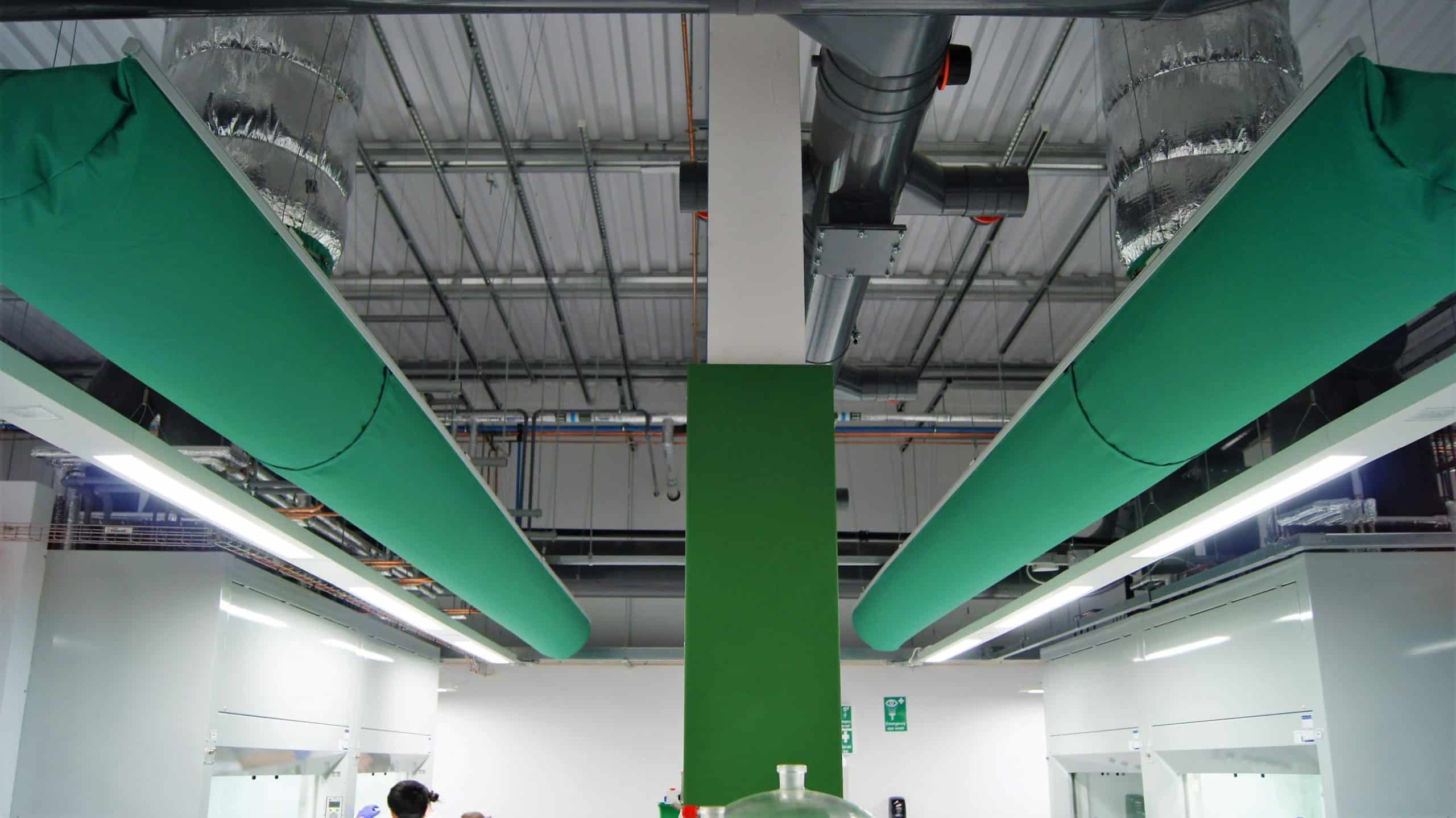
The University of York was founded in 1963 in the ancient cathedral city of York. It is one of the foremost research universities in the United Kingdom, consisting of over 30 academic departments. One of these departments is the Chemistry Department. In recent years, their facilities have been extended and modernised to provide the best learning environment for the university’s teaching and research activities. As part of this expansion, a 2-story building was erected to house a teaching lab on the ground floor and the Green Chemistry Centre of Excellence (GCCE) on the upper floor, whose research centres on clean technologies and waste valorisation.
Prihoda fabric ducts were specified to fulfil the ventilation requirements of these labs.
The Challenge
Like most chemistry laboratories, the University of York’s labs use fume cupboards. Their purpose is to protect staff and students from potentially toxic fumes generated during chemistry teaching and research activities. However, their presence poses a challenge for ventilation. On the one hand, a chemistry lab requires makeup air to compensate for the air vented out by the fume cupboards. On the other hand, the cupboards’ sensors are very sensitive, and any misplaced draughts can cause incorrect readings, reducing the efficacy of the fume cupboards. The labs use a combination of fume cupboards and canopy fume hoods. The main teaching lab alone contains 80 two-person fume cupboards – ensuring a draught-free air distribution was vitally important.
Another challenge in this project was the laboratories’ layout. Several sections are made up of long, narrow areas with relatively low ceilings – further adding to the problem of air draughts near the fume cupboards. The ventilation system would also need to avoid the lighting, electrical cable trunking and other services mounted on the ceiling.
Our Approach
To overcome the challenges above, Prihoda supplied over 20 custom D-shaped fabric ducts with microperforations, which provide very gentle air dispersion. The microperforations were strategically arranged in bands along the fabric ducts. These were designed specifically for each area to create a low-velocity air distribution that doesn’t interfere with equipment sensors, even in the narrower areas. Using this type of diffuser also made the design quieter and, therefore, more practical for a learning environment.
The ducts were installed using suspended aluminium profiles so that they wouldn’t clash with existing services. Their placement also allows for easy access in case washing or maintenance are needed. And because aesthetics are important in a teaching environment, the colour of the ducts was selected to create a cohesive look in each lab. Blue ducts match the blue feature walls in the main teaching lab, while the green ducts used in the GCCE labs coordinate with the green accents in this section of the building.
The Outcome
The result is a modern ventilation ducting system that is perfectly suited to research and teaching laboratories. As each duct is designed specifically for where it will be located, the resulting air patterns are entirely free of draughts. Because of this, they do not impede the correct operation of fume cupboards and other delicate lab equipment. They are easy to access for washing, and like all Prihoda fabric ducts, they are all washable in a washing machine, making hygienic ventilation absolutely effortless.
Looking for more information?
Our experts are on hand to answer any questions. Why not give us a call or drop us a message, We’ll work with you to find the right solution.
Contact us
